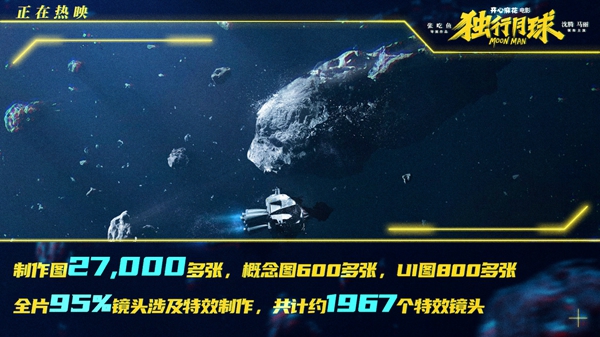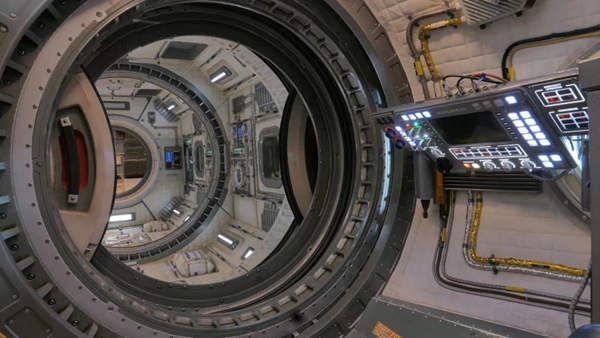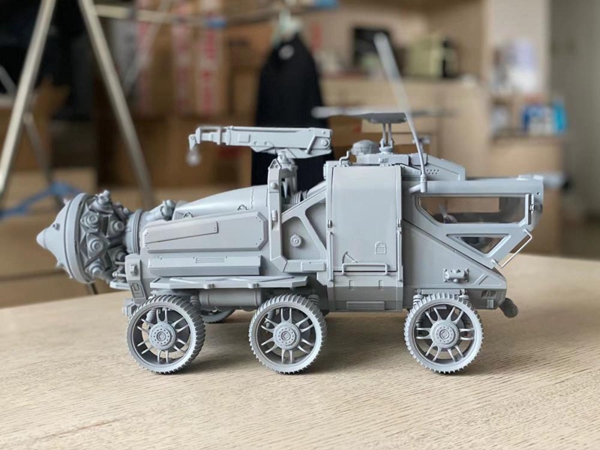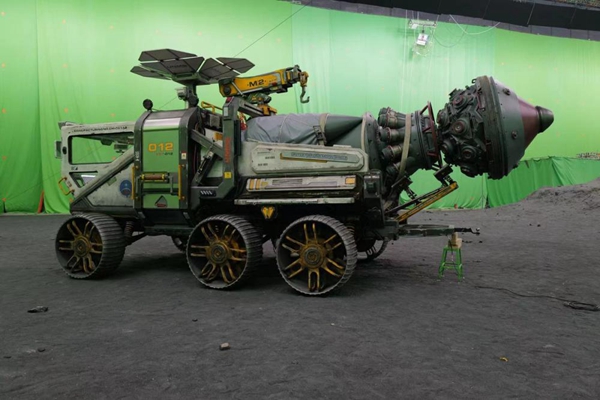The recent sci-fi comedy film "Solo to the Moon", produced by Mosaic Pictures, has broken 2.879 billion yuan at the box office, becoming the first success story since the establishment of the Science and Film Fusion Project.
The production process involved the intervention of scientists and engineers from China Aerospace and the Chinese Academy of Sciences.
Can the fusion of science and film pave the way for the continued output of outstanding domestic science fiction films?

3D printing was used throughout, comparable to a car factory
When Solo to the Moon was first released, audiences were expecting a comedy, but after watching it, they realised that it was also a solid science fiction film.
The vast majority of the film is set in a space environment. Rocket launches, lunar bases, space stations, nuclear bombs, meteorite belts, etc., are not ridiculously simplistic because of the comedy, but rather the scenes are magnificent, detailed and realistic, and some even classify it as "hardcore sci-fi".
One netizen wrote: "The graphics are very professional, so I guess there must have been professional guidance. The first acknowledgement in the credits is from the press and propaganda centre of the National Space Administration. Space propaganda is getting better and better, science fiction movie lovers are ecstatic."
In fact, it's not just the long list of acknowledgements at the end of the film, to be precise, this is the first time that a "science advisor" has been explicitly mentioned in a Chinese science fiction film. It is also the first success story to be released after years of science-film fusion.
In 2020, the "Opinions on Promoting the Development of Science Fiction Films" jointly issued by the State Film Bureau and the China Association for Science and Technology stated that a pool of science advisors for science fiction films should be established to provide professional advice, technical support and other services for science fiction films.
However, it is not easy for film and television professionals to find scientific experts as advisors. In the middle of this, a "bridge" is needed.
At the end of 2020, the China Association of Popular Science Writers' Committee for the Integration of Science and Film was officially established, hoping to build a platform for fluid dialogue and close cooperation between the film and science communities.

Also in 2020, Solo Moon had just completed its project and set up its creative team. The director, Zhang Eating Fish, art director, Li Miao, and visual effects director, Wei Ming, are all true "science fiction fans". Having grown up watching all kinds of science fiction works, they decided to make "Solo Moon" a real science fiction comedy.
As science fiction fans, they understand the mindset of the audience, so the pressure was particularly high. The team is well aware that the biggest challenge for domestic sci-fi films is that - our audience is already very familiar with Hollywood sci-fi blockbusters and has long been fed by the high investment, high cost blockbusters from around the world. Chinese science fiction films are just getting started, but audiences will directly compare them to Hollywood blockbusters. In other words, there's no chance of growth in between.
The homework is done from scratch. Li Miao studied a lot of information on the Apollo lunar exploration and space station design, many of which were in foreign languages.

The information said that the moon dust would interfere with the electronic precision instruments, so he designed the lunar shield base entrance airlock with dust removal equipment, and the lunar rover needed to be strictly dusted when entering the base chamber. Unfortunately, the details of the 'dust removal' did not end up in a large number of cuts in the main film.

Even so, "there is still too little information available, and it's hard to find in bookshops and online." Li Miao lamented. The film lacked the experience of its predecessors and started from scratch.

For example, the first version of the interior of the Moon Shield base took two months of experimentation, but the results were unsatisfactory and had to be scrapped and redone. The film sets were usually built from wood and painted, but no matter how glossy the paintwork was, the corners were still soft and lacked the texture of a space capsule.
After two months of scrapping, Li Miao decided to use a lot of 3D printed components, with some detailed parts printed in nylon. This was costly, but the scenes had a more industrial feel.
This time, 3D printed models of almost all the scenes and vehicles were produced, so that each time a new solution was discussed, a new model could be printed quickly.
Li Miao's team purchased several different types of printers, divided into PLA, nylon, photosensitive resin and other materials, depending on the needs.
Some of the things that the viewer thinks are visual effects are actually real devices made by the engineers. For example, the gull-wing doors of the lunar rover, with buttons to press, are real and controllable. There is also the lighting system of the nuclear bomb, etc., all of which were custom-made by mechanical engineers.
After the 3D models were verified, the art team then handed them over to the visual effects team to build the digital models. Then there was an additional step that ordinary films don't have - several months of virtual filming.
It is equivalent to the team having digitally simulated the scheduling and effects of all the shots before the real people come into the set to start shooting. Post-production was front-loaded and pre-programmed, with smooth communication and close connection between all departments.
"It felt like building an automotive factory assembly line." Li Miao laughs.
The 3D printing workload was so heavy that it was even outsourced to a number of 3D printing factories in Shenzhen. Solo to the Moon is probably the first film team in China to use 3D printing on such a large scale.
And these steps are the beginning of the Chinese film industry.
The general direction barely defies the science
"Nowadays, when I think about it, if we had intervened earlier in the early stages, we could have given the crew more professional resources." Wang Shu, deputy director of the China Association for Popular Science Writing's Special Committee for the Integration of Science and Film, lamented.









